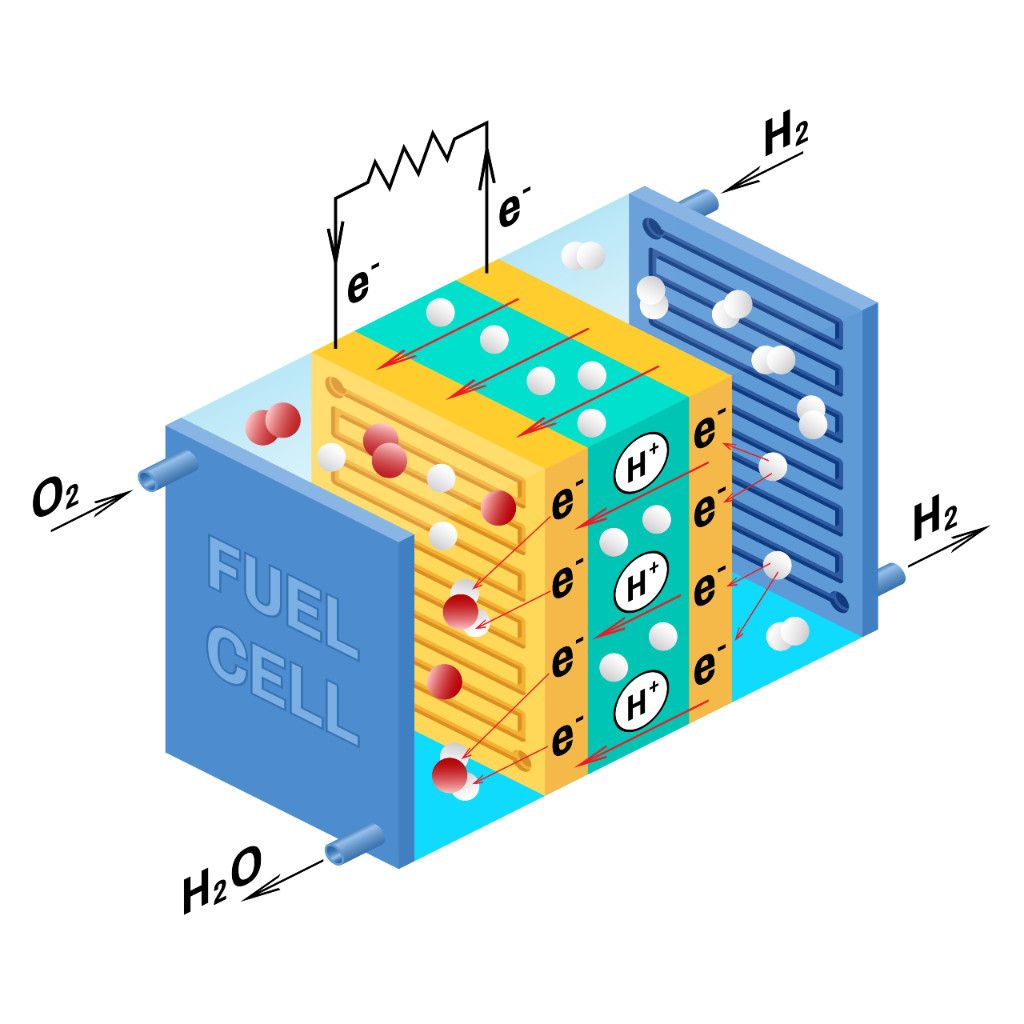
With Model-Based Design, behavioral models are at the center of your development process. How much do you know about applying Model-Based Design to the development of fuel cells?
Take the quiz—just 10 questions—to find out.
Question 1/10
What is Model-Based Design?
Question 2/10
What kind of fuel cell system model can you develop using Model-Based Design?
Question 4/10
After simulating your fuel cell model—with control algorithms and the multidomain physical system—which of the following is NOT true for Model-Based Design?
Question 5/10
Which of the following is NOT a way in which Model-Based Design helps save time and money in developing your fuel cell system project?
Question 6/10
True or False? Model-Based Design supports AUTOSAR-compliant workflows when developing fuel cell systems for automotive applications.
Question 7/10
What can you do with existing C/C++ code—such as control algorithms, device drivers, lookup tables, and generic functions supporting your fuel cell applications—when you adopt Model-Based Design?
Question 8/10
Which of the following model verification activities can be automated for your fuel cell system with Model-Based Design?
Question 9/10
In the process of developing fuel cell systems, Model-Based Design complements and enables Agile development practices, including:
Question 10/10
What types of subsystems can you model with Simscape™ in a fuel cell system?
You scored:
%
Great job!
You’re on your way to becoming a pro. Learn more about developing fuel cell systems using Model-Based Design.
You’re a pro!
Start applying these Model-Based Design skills with Simulink and Simscape today.
Answer Key
- What is Model-Based Design? The systematic use of models throughout the development process, from requirements specification to system operation.
- With Model-Based Design you can develop: i) A detailed fuel cell system that includes a membrane electrode assembly, a multispecies gas network, and a thermal management system; ii) A powertrain model of a fuel cell virtual vehicle that combines a fuel cell, a battery system, and an electric motor; iii) A digital twin of the fuel cell system to monitor key output characteristics and optimize operation
- Using Model-Based Design for fuel cell system simulation helps with: i) Selecting and sizing components of your design; ii) Designing and validating control algorithms for thermal, humidity, and pressure management even before hardware is available; iii) Reducing development time by verifying functionality of controllers and generating optimized code for embedded controllers from simulation models
- After simulating your fuel cell model containing control algorithms and the multidomain physical system, which of the following is NOT true for Model-Based Design? You cannot generate code because Model-Based Design only supports simulations
- Which of the following is NOT a way in which Model-Based Design helps save time and money in developing your fuel cell system project? Providing hardware prototypes that are already built for your project
- Model-Based Design supports AUTOSAR-compliant workflows when developing fuel cell systems for automotive applications.
- What do you do with existing C/C++ code, such as control algorithms, device drivers, lookup tables, and generic functions supporting your fuel cell applications when you adopt Model-Based Design? Existing C/C++ code can be integrated directly in your models for simulation, verification, and code generation
- The following model verification activities can be automated for your fuel cell system with Model-Based Design: i) Requirements traceability; ii) Standards compliance checking; iii) Coverage analysis and test case generation; iv) Design error detection (e.g., dead logic, integer overflow, division by zero)
- In the process of developing fuel cell systems, Model-Based Design complements and enables Agile development practices, including: Continuous integration for automatic testing and verification of models and code
- With Simscape, you can model different subsystems within a fuel cell system. These subsystems include: i) pressure-reducing valve subsystems; ii) recirculation subsystems; iii) coolant tank subsystems; iv) gas channels subsystems
Select a Web Site
Choose a web site to get translated content where available and see local events and offers. Based on your location, we recommend that you select: United States.
You can also select a web site from the following list
How to Get Best Site Performance
Select the China site (in Chinese or English) for best site performance. Other MathWorks country sites are not optimized for visits from your location.
Americas
- América Latina (Español)
- Canada (English)
- United States (English)
Europe
- Belgium (English)
- Denmark (English)
- Deutschland (Deutsch)
- España (Español)
- Finland (English)
- France (Français)
- Ireland (English)
- Italia (Italiano)
- Luxembourg (English)
- Netherlands (English)
- Norway (English)
- Österreich (Deutsch)
- Portugal (English)
- Sweden (English)
- Switzerland
- United Kingdom (English)